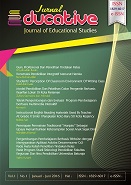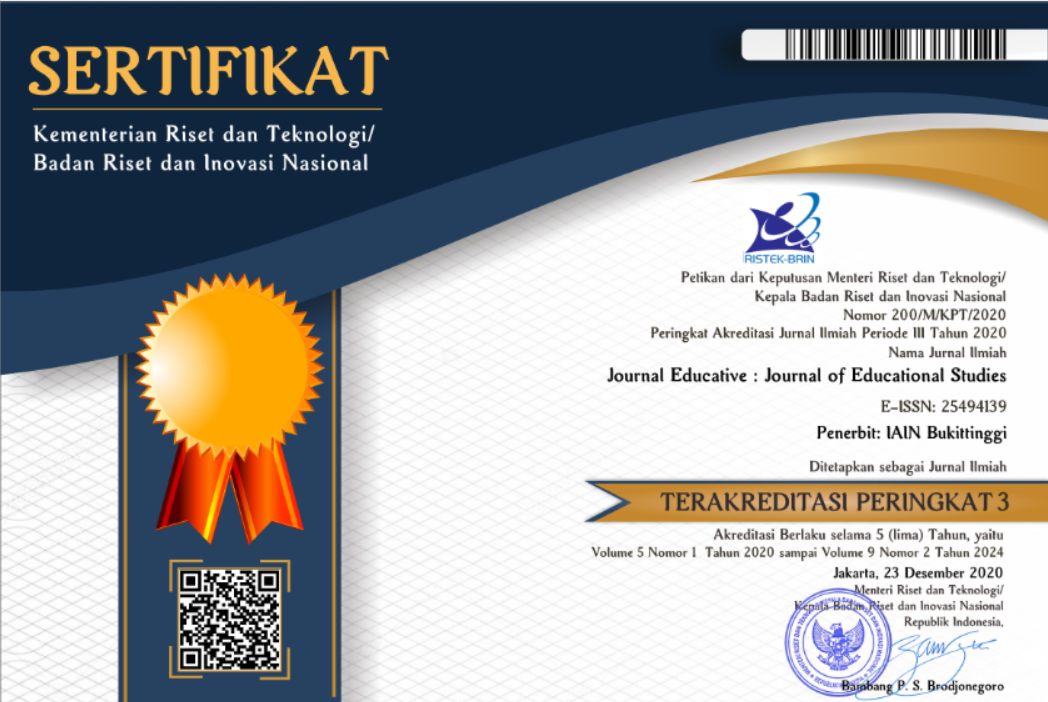TEKNIK PENGEMBANGAN DAN EVALUASI PROGRAM PEMBELAJARAN BERBASIS MULTIMEDIA INTERAKTIF
DOI:
https://doi.org/10.30983/educative.v1i1.123Abstract
References
Borg and Gall (1983). Educational Research, An Introduction. New York and London. Longman Inc.
Gay, L.R. (1991). Educational Evaluation and Measurement: Com-petencies for Analysis and Application. Second edition. New York: Macmillan Publishing Compan.
Hannafin, Michael J. (1988). The Design, Development, an Evaluation of Instructional Software. Macmillan publishing Company. New York.
Rita C. Richey, J. D. K., Wayne A. Nelson. (2009). Developmental Research : Studies of Instructional Design and Development.
Seels, Barbara B. & Richey, Rita C. (1994). Teknologi Pembelajaran: Definisi dan Kawasannya. Penerjemah Dewi S. Prawiradilaga dkk. Jakarta: Kerjasama IPTPI LPTK UNJ.
Sugiyono. (2011). Metode Penelitian Kuantitatif, Kualitatif, dan R & D. Bandung: Alfabeta.
Tessmer, Martin. (1998). Planning and Conducting Formative Evaluations. Philadelphia: Kogan Page.
van den Akker J. (1999). Principles and Methods of Development Research. Pada J. van den Akker, R.Branch, K. Gustafson, Nieven, dan T. Plomp (eds), Design Approaches and Tools in Education and Training (pp. 1-14). Dortrech: Kluwer Academic Publishers.
van den Akker J., dkk. (2006). Educational Design Research. London and New York: Routledge.
Downloads
Published
How to Cite
Issue
Section
Citation Check
License
Authors who publish with this journal agree to the following terms:
1. Authors retain copyright and grant the journal right of first publication with the work simultaneously licensed under a Creative Commons Attribution License that allows others to share the work with an acknowledgment of the work's authorship and initial publication in this journal.
2. Authors are able to enter into separate, additional contractual arrangements for the non-exclusive distribution of the journal's published version of the work (e.g., post it to an institutional repository or publish it in a book), with an acknowledgment of its initial publication in this journal.
3. Authors are permitted and encouraged to post their work online (e.g., in institutional repositories or on their website) prior to and during the submission process, as it can lead to productive exchanges, as well as earlier and greater citation of published work (See The Effect of Open Access).




